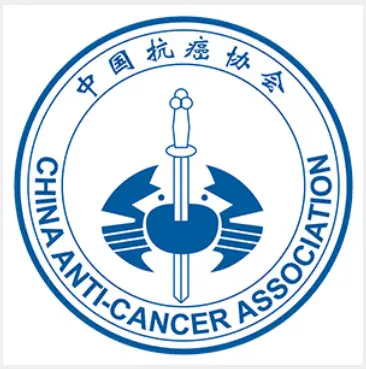点评:王昆

肿瘤学硕士研究生,河北省人民医院肿瘤五科医师。
欧米伽-3(ω3)补充剂与欧米伽-6(ω6)补充剂在改善乳腺癌幸存者疼痛方面的效果对比研究:URCC NCORP RCT(ABS:10118)
背景
疼痛是乳腺癌治疗中极为常见的不良反应。重度疼痛降低治疗依从性、增加激素治疗(HT)的停药率,同时影响生活质量。通过多中心、盲法、II期、RCT的URCC NCORP研究,比较ω3脂肪酸(鱼油)补充剂与ω6脂肪酸(大豆油)补充剂对改善疼痛的效果。
方法
乳腺癌幸存者在辅助治疗后的4-36个月随机分为3组:1)高剂量ω3(ω3; 6g /天)组,2)低剂量ω3 / ω6(ω3 / ω6; ω3:3g /天,ω6:3g /天)组和3)高剂量ω6(ω6; 6g /天)组,共使用6周。在干预前和干预后通过简单疼痛量表(BPI)评估疼痛。连续检测血液中血清脂肪酸和炎性生物标志物含量。通过可以控制基线疼痛和HT(AI,他莫西芬或无)类型的ANCOVA来计算从基线到干预后的二次数据分析的平均变化。
结果
共纳入108例女性乳腺癌幸存者(93%为白人,平均年龄60岁)。生物化学血液分析表明三组患者均具有高度依从性,且血液标本污染最小。三组患者在基线时的平均最重疼痛水平没有差异(ω3 = 4.9,ω3 / ω6 = 5.6,ω6 = 4.7; p = 0.43)。平均最重疼痛评分在ω3组降低0.8分,ω3 / ω6组降低0.8分,ω6组降低1.7分(ω3 vsω6 p值= 0.18)。当前疼痛评分的平均变化水平更明显(变化评分:ω6 = 21.8 vsω3 / ω6 = 20.8 vsω3 = 20.5; ω3vsω6 p = 0.05),提示存在剂量反应。在平均疼痛和最轻疼痛也出现相似改变,但不具有统计学差异。与ω3组相比,ω6组的炎性生物标志物IL-6水平显著降低(IL-6变化:ω3 = + 0.17 vs ω6 = 20.30; p <0.01)。
结论
ω6补充剂较ω3补充剂更能降低乳腺癌幸存者的疼痛水平。与ω3补充剂相比,ω6补充剂显著降低血液IL-6水平,提示存在潜在的作用机制。未来需要进一步研究ω6脂肪酸在癌症患者中的作用。
研究资助:NCI R03CA175599&UG1CA189961。北欧自然公司提供所有研究代理。
临床试验信息:NCT02352779。
专家点评

天津医科大学肿瘤医院疼痛科主任、营养科主任
中华医学会疼痛学分会常委、癌痛学组组长
中国抗癌协会癌症康复与姑息治疗专业委员会常委、难治性癌痛学组组长
中国抗癌协会肿瘤营养与支持治疗专业委员会常委、肿瘤营养支持学组组长
中国抗癌协会肿瘤心理学专业委员会常委
中国抗癌协会麻醉与镇痛专业委员会委员
中国医师协会疼痛学分会委员
《中国疼痛医学杂志》编委
ω-3 和ω-6 多不饱和脂肪酸(pOIyunsaturated fattyacid,PUFA)是因第一个双键的位置在3、4 和6、7 两个碳原子之间而得名。由于ω-3 和ω-6 PUFA 在人体内不能合成,必须由食物供给,所以,食用富含ω-3 和ω-6 PUFA 的食物是十分重要的。例如:亚麻仁油,鱼油和海狗油中富含二十碳五烯酸(EPA)和二十二碳六烯酸(DHA);ω-6 PUFA 含量较高的油脂有:红花油、棉籽油、玉米油等。有人根据ω-3 和ω-6PUFA 可减少细胞因子和前列腺素生成的原理提出用鱼油来缓解疼痛。疼痛使IL-1、IL-6、TNF-a 及PGE2的水平上升。ω-3可减少抗炎药的用量,并减轻麻醉剂引起的不良反应。
有研究发现肿瘤患者的ω-6增加,EPA减少。许多研究发现,ω-6PUFA具有促炎作用,而ω-3PUFA具有抗炎作用,本文研究的结果需要更多研究结果来证实,本文仅供参考。
附摘要原文:
Efficacy of omega-3 (v3) supplementation versus omega-6 (v6) supplementation for reducing pain among breast cancer survivors: A URCC NCORP RCT.
Background: Pain is a highly prevalent side effect of breast cancer therapy. High pain levels can reduce treatment adherence and increase discontinuation rates for hormonal therapies (HT)while reducing quality of life.Weconducted a multi-site, blinded phase II RCT examining the efficacy of v3 fatty acid (fish oil) supplementation versus v6 fatty acid (soybean oil) supplementation for improving pain through the URCC NCORP.
Methods: Breast cancer survivors between 4-36 months post-adjuvant therapy were randomized into 3 arms: 1) High-dose v3 (v3; 6 g/day), 2) Low-dose v3/v6 (v3/v6; v3: 3 g/day and v6:3 g/day) and 3) High-dose v6 (v6; 6 g/day) for 6 weeks. Pain was assessed via the Brief Pain Inventory (BPI) at pre- and post-intervention. Serial blood was collected for serumfatty acid and inflammatory biomarker analysis. ANCOVAs,controlling for baseline pain and type ofHT (AI, tamoxifen, or none), were used to calculatemean change frombaseline to post-intervention for this secondary data analysis.
Results: 108 female breast cancer survivors were accrued (93% white, mean age = 60). Biochemical blood analyses confirmed high compliance in all arms with minimal contamination. Mean baseline Worst Pain levels did not differ between groups (v3 = 4.9, v3/v6 = 5.6, v6 = 4.7; p =0.43). The mean Worst Pain score decreased by 0.8 points for v3, by 0.8 points for v3/v6, and by 1.7 points for v6 (v3 vs v6 p-value = 0.18). The mean change in Current Pain score was more pronounced (Change score: v6=21.8 vsv3/v6=20.8 vsv3=20.5;v3vsv6 p = 0.05) and indicated a dose-response. Similar changes were found for Average Pain and Least Pain but the differences were not significant. The v6 group had a significant reduction in the inflammatory biomarker IL-6 compared to the v3 group (IL-6 change: v3 = +0.17 vs v6 = 20.30; p , 0.01).
Conclusions: v6 supplementation reduced pain levels compared to v3 supplementation in breast cancer survivors. v6 also significantly reduced IL-6 levels compared to v3, indicating a potential mechanism of action. Further research is needed on the effects of v6 fatty acids in cancer patient. Funding: NCI R03CA175599 &UG1CA189961. Nordic Naturals Inc. supplied all study agents. Clinical trial
information: NCT02352779.













 苏公网安备32059002004080号
苏公网安备32059002004080号


